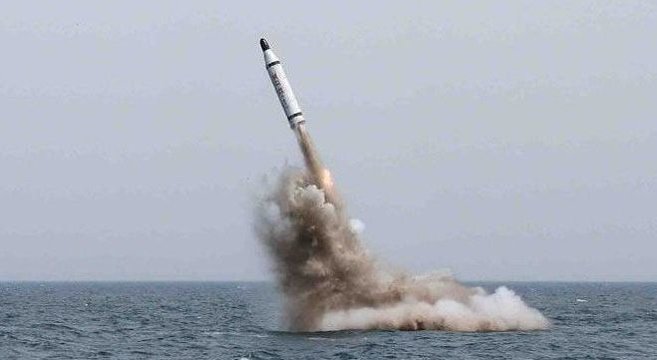According to South Korea’s military, North Korea has fired several anti-ship cruise missiles off its east coast.
Authorities said the weapons, launched on June 8 near the city of Wonsan, appeared to be short-range “surface-to-ship” missiles.
They flew about 125 miles before landing in the water.
Repeated ballistic missile tests by North Korea this year – not all successful but all a breach of UN sanctions – have sparked international alarm.

Experts fear the tests indicate progress towards North Korea’s ultimate goal of putting a nuclear warhead on a missile.
The latest firing, however, does not violate the UN Security Council’s resolutions against the North, as those resolutions only ban ballistic missile launches, reported South Korean news agency Yonhap.
South Korean military spokesman Roh Jae-cheon said the latest launch showed the North “likely wanted to show off its ability to precisely target a large warship” after recent military drills involving US aircraft carriers and South Korean troops.
“By testing different types of missiles, North Korea also appears to be aiming to secure the upper hand in relations with South Korea and the United States,” Roh Jae-cheon told reporters.
Anti-ship cruise missiles are guided missiles which generally skim the water. In 2012, North Korea displayed several such weapons known as Styx.
North Korea has also previously unsuccessfully tested anti-ship ballistic missiles, experts believe.
On May 29, North Korea fired a Scud-type ballistic missile from the same location, which flew about 280 miles.
Last week the UN Security Council unanimously adopted a new resolution to impose targeted sanctions on certain North Korean officials and state entities.
The US has also ramped up its military presence in the region, conducting drills with Japan as well as South Korea, and is installing a controversial missile defense system in South Korea, known as Terminal High-Altitude Area Defense system (THAAD).
However, South Korea said on June 7 it was suspending the further deployment of the system until an environmental assessment is completed.
